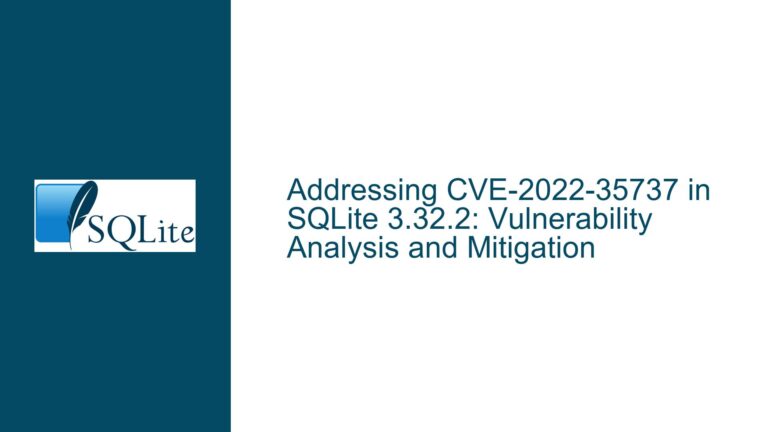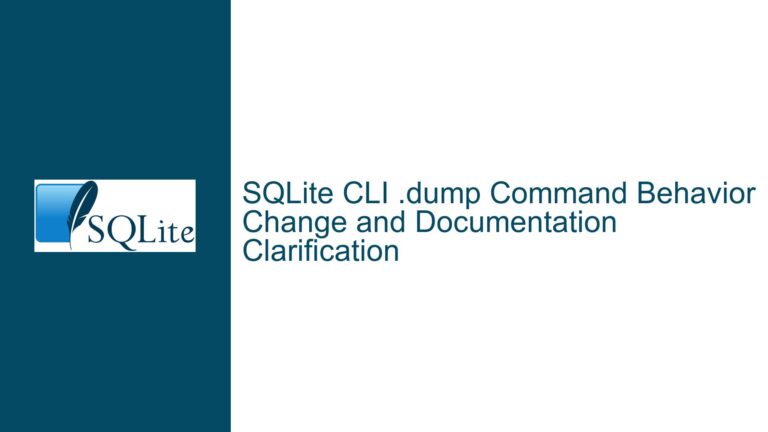Overcoming SQLite Schema Migration Challenges in Web Applications
Understanding SQLite’s Schema Modification Constraints in Web Development
SQLite’s architecture introduces unique constraints when modifying database schemas compared to client-server databases like MySQL or PostgreSQL. These constraints stem from fundamental design differences between embedded and client-server database systems. In client-server architectures, schema changes are executed through live ALTER TABLE commands that modify structures in-place while maintaining continuous client connections. SQLite implements a more conservative approach due to its file-based nature and ACID guarantees, requiring developers to create new tables with modified schemas, copy data, then replace old structures through atomic operations. This process ensures data integrity but introduces operational complexity when renaming columns, changing primary keys, or altering constraints.
The embedded architecture of SQLite means every schema modification must account for exclusive write access to the database file. Web applications handling concurrent requests may encounter locking contention during prolonged schema migration operations. Unlike PostgreSQL’s online schema changes or MySQL’s INSTANT ALTER TABLE capabilities, SQLite lacks native support for non-blocking schema evolution. Developers must implement custom migration strategies using transactions and temporary tables to prevent service interruptions. This operational reality creates friction for teams accustomed to ORM-driven migrations in Django, Rails, or Laravel ecosystems where schema changes appear seamless through framework abstractions.
Schema migration complexity in SQLite escalates when dealing with cross-table dependencies and view definitions. Foreign key constraints, indexes, and triggers referencing modified tables require manual recreation after structural changes. Client-server databases often handle dependency updates automatically during ALTER operations, while SQLite’s approach shifts responsibility to developers for managing relational integrity throughout the migration lifecycle. This necessitates comprehensive test coverage and migration rollback plans that account for multi-object dependencies within the database schema.
Root Causes of Schema Migration Complexity in SQLite
The core technical limitation driving SQLite’s schema modification challenges lies in its minimal ALTER TABLE implementation. SQLite supports only two ALTER TABLE operations natively: renaming tables and adding columns to the end of existing tables. All other structural changes – including column reordering, data type modifications, constraint adjustments, and primary key alterations – require manual table reconstruction. This design stems from SQLite’s storage architecture, where table schemas are embedded directly into the database file’s binary structure rather than maintained in separate system catalogs. Modifying existing table structures would necessitate rewriting large portions of the database file, increasing risk of corruption during interrupted operations.
Concurrency limitations exacerbate migration challenges in web application contexts. SQLite’s write-ahead logging (WAL) mode allows multiple readers but enforces single-writer concurrency. Schema changes require exclusive database access, blocking all other write operations during migration execution. Web applications with high write throughput may experience significant latency spikes or connection timeouts during schema updates. This contrasts with client-server databases that implement more sophisticated locking mechanisms to allow concurrent DDL and DML operations, albeit with potential performance tradeoffs.
Dependency management between database objects creates cascading migration requirements. When altering a table referenced by views, triggers, or foreign keys, developers must manually drop and recreate dependent objects using updated schema references. Client-server databases often maintain dependency graphs that automate object recreation during schema changes, but SQLite’s lightweight design omits this functionality. Teams must implement custom tooling to track and regenerate dependent objects, increasing the cognitive load for database maintainers. The absence of native schema versioning further complicates change management, requiring external systems to track migration history and execution status.
Streamlining SQLite Schema Migrations with Automated Transformation Tools
The sqlite-utils Python library and CLI tool provides a robust solution for automating SQLite schema transformations. Developed by Simon Willison, this tool implements battle-tested patterns for executing complex schema changes through atomic table replacement. The transformation workflow involves creating a temporary table with the desired schema, copying data from the original table, then atomically replacing the original with the temporary version. This approach maintains data integrity while enabling sophisticated schema modifications through a declarative interface.
Key capabilities of sqlite-utils include column renaming, type conversion, primary key redefinition, and constraint management. The tool automatically handles index recreation and foreign key constraint validation when transforming tables. Developers can execute multi-step schema changes through Python scripts or CLI commands, integrating migrations into existing deployment pipelines. For web applications, combining sqlite-utils with connection pooling ensures migrations execute during maintenance windows or low-traffic periods to minimize user impact.
A production-grade migration workflow using sqlite-utils involves four phases: schema analysis, transformation planning, execution, and validation. During analysis, the tool inspects existing table structures to generate safe migration paths. Transformation planning identifies required temporary tables, data conversion rules, and dependency update sequences. Execution leverages SQL transactions to guarantee atomic application of changes, rolling back if any step fails. Post-migration validation checks foreign key consistency, index integrity, and data preservation metrics. Implementing this workflow reduces human error in manual schema scripting while maintaining SQLite’s performance characteristics.
Best practices for SQLite schema evolution include maintaining version-controlled migration scripts, implementing automated rollback procedures, and utilizing WAL mode during migrations to reduce locking contention. Teams should structure migrations as idempotent operations that can be safely rerun after failures. Combining sqlite-utils with framework-specific ORM migration tools creates a hybrid approach where simple schema changes use native ORM capabilities, while complex transformations offload to specialized tooling. For web applications requiring zero-downtime migrations, blue-green deployment patterns can be adapted to SQLite by maintaining parallel database files and switching connections after successful schema updates.
Advanced teams implement schema change monitoring through SQLite’s pragma functions like table_info and foreign_key_list. These metadata sources feed into custom linters that verify migration safety before production deployment. When dealing with large datasets, incremental data copying techniques using row batching prevent memory exhaustion during transformation. For cross-platform compatibility, migration tools should account for SQLite version differences in feature support, particularly around generated columns and strict typing introduced in version 3.37.0.
Ultimately, SQLite’s schema modification constraints become manageable through disciplined tooling and process design. By embracing its atomic replacement paradigm rather than fighting against it, development teams unlock SQLite’s full potential while maintaining agility comparable to client-server databases. The solution requires initial investment in automation infrastructure but pays long-term dividends through reduced operational complexity and improved data integrity.






